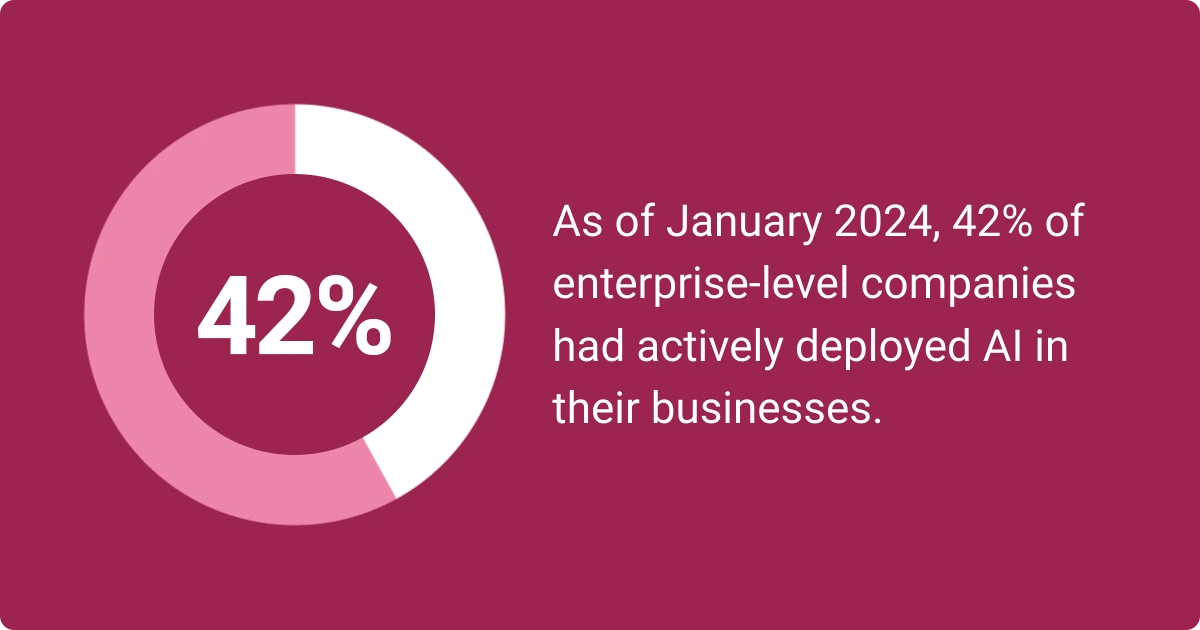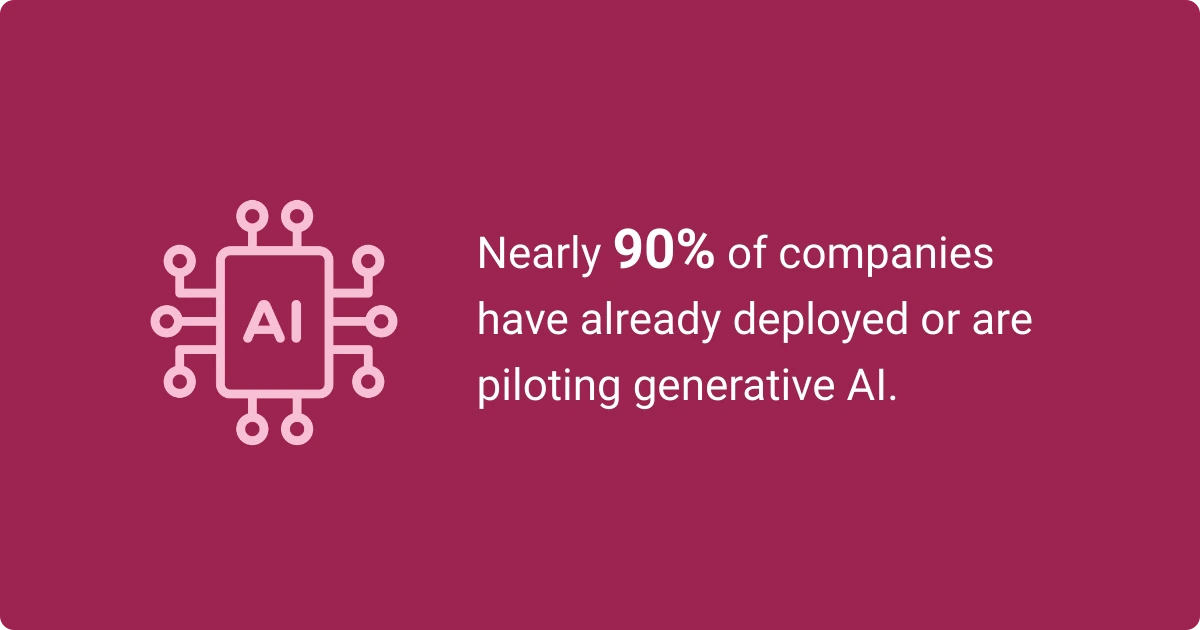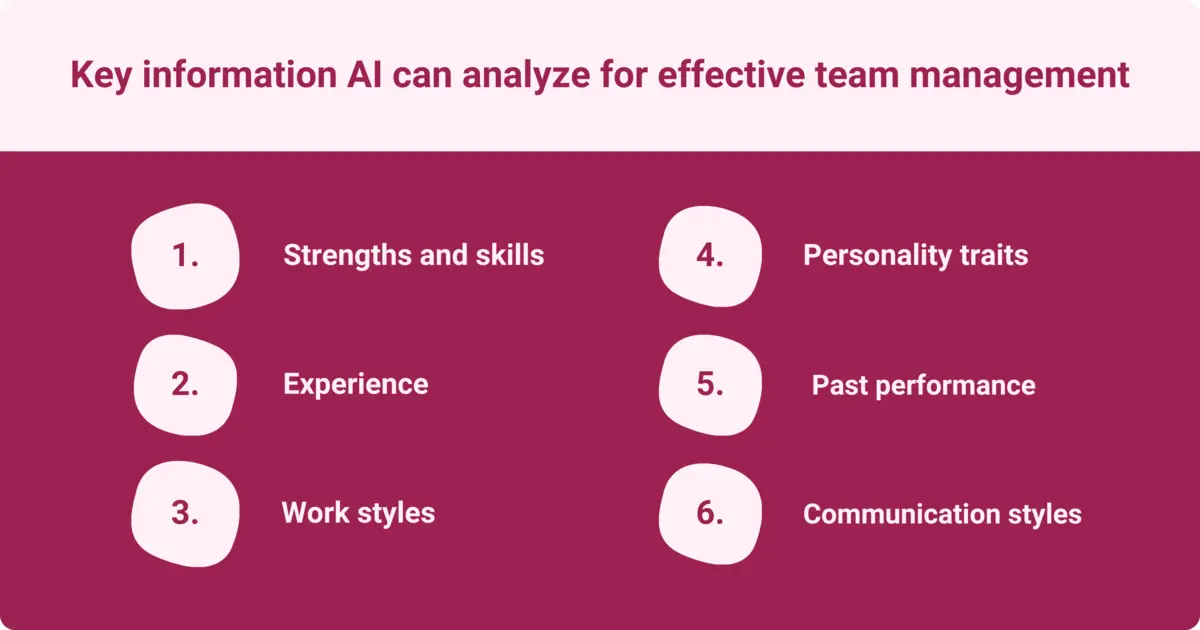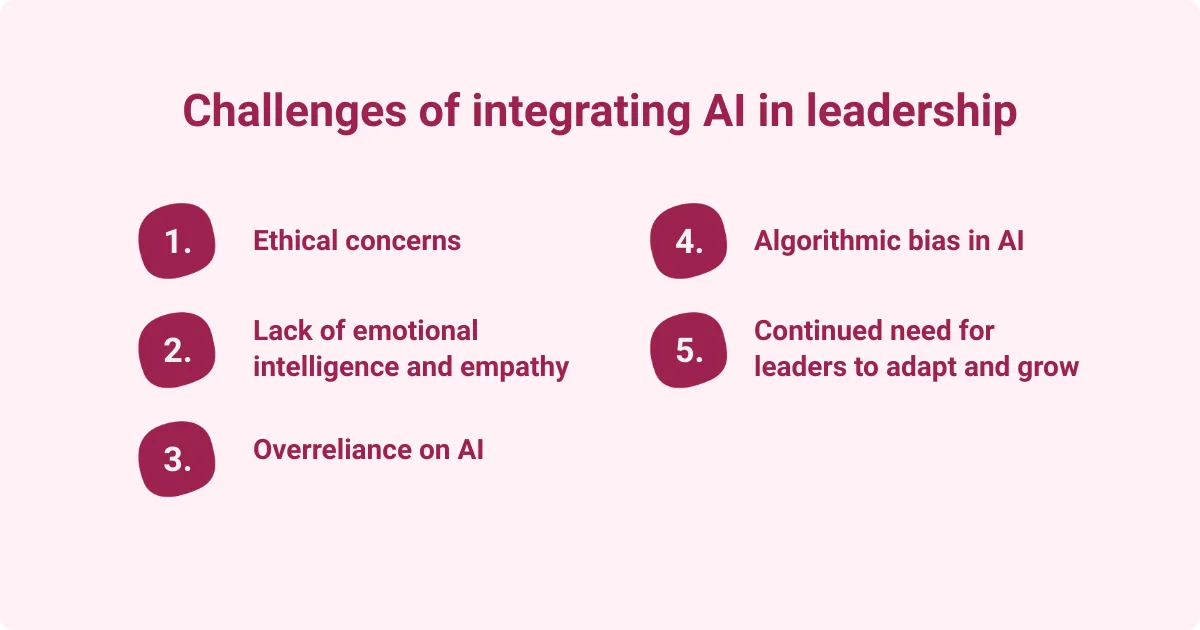Artificial Intelligence and Leadership: The Impact of AI on Modern Leadership Dynamics

According to a recent study on AI’s impact on the future of work and human capitalOpens in a new tab, 82% of CEOs and senior leaders believe AI will have an extreme or significant impact on their organizations. For many businesses, that impact begins at the top, as the convergence of artificial intelligence and leadership transforms the way they operate and how their teams collaborate.
Learning how to harness AI to improve your leadership – while avoiding its pitfalls – will better position you to put it to good use for your organization and professional growth.
The impact of artificial intelligence on leadership and decision-making
Although widespread awareness of the technology is a relatively recent development, artificial intelligence (AI) already plays a major role in many modern workplaces. According to IBM Global AI Adoption Index 2023Opens in a new tab, 42% of enterprise-level companies had actively deployed AI in their businesses, and an additional 40% were exploring or experimenting with it.

This embrace of the rapidly developing technology stems from the advantages it offers. When an organization uses it correctly, AI can complement human strengths, assist in problem-solving, enable innovation, and increase productivity.
Improved decision-making
One of AI's greatest strengths is its ability to take a deep dive into massive quantities of data and provide insights. As a result, leaders can use AI features, such as predictive analysis, in decision-making and strategic planning. Using historical data and current trends, AI can forecast future shifts and demands in the market so you can make objective, data-driven choices.
Real-time sentiment analysis
Understanding how your employees are feeling is essential, but capturing and using that information can be difficult. While gathering feedback from employees through surveys and focus groups is helpful, breaking down the comments you receive takes time and often delays necessary changes.
With AI, you can assess your employees' responses to training sessions, projects, and the overall company culture much more quickly. AI tools can parse through feedback and identify primary concerns, allowing you to respond rapidly and demonstrate that you value your employees' views.
Competitive intelligence
You can learn a lot by examining competitors' activities, but traditional methods of analyzing that data are slow and labor-intensive. AI, on the other hand, can easily monitor and draw information about your competitors from a variety of sources and use it to identify patterns.
The insights you gain from AI will help determine what strategies you adopt moving forward and reveal areas for improvement, underscoring the critical connection between AI and business intelligence. It may also help you find gaps in the market that your organization can fill.
Personalized insights
Feeding information to AI is also beneficial if you want tailored insights into your own leadership development. AI can analyze your organization's record and your personal performance and compare that to your specific goals. With that data on board, it can then provide personalized insights and recommendations on what to do next.
For example, an AI tool might suggest that you pursue a particular type of training to refine a skill that's lacking in your past performance reviews. Or it might suggest steps to develop a leadership practice that could boost your organization's progress in a weak area.
Automation
Generative AI is an especially promising technology for businesses because it enables automation. According to a 2024 survey by Bain & Company on Generative AIOpens in a new tab, nearly 90% of companies have already deployed or are piloting generative AI.

It's no surprise that this type of AI is so widespread given that it can take care of time-consuming, repetitive tasks, such as:
- Inventory management
- Creating invoices and processing payments
- Tracking expenses
- Responding to common customer questions or concerns
- Writing emails
These activities are generally routine processes that don't require human involvement, making it easy to automate them without worrying about errors.
Facilitate collaboration
Collaborative AI is also becoming increasingly common in business because it helps teams work together more effectively, increasing your organization's productivity and efficiency.
AI can analyze your current collaboration strategy and pinpoint weak areas. It can also automatically take notes and transcribe meetings for better record-keeping and cohesion among the group.
Other practical uses of collaborative AI include scheduling meetings and facilitating enhanced data sharing among group members. These tools support seamless collaboration that transcends geographical barriers, ensuring all the members of your team are on the same page – no matter their physical locations.
Effective team management
Building and managing teams is a critical part of effective leadership, but it often relies on subjective judgments about employees. While those instincts are often valid, they can also suffer from bias, a lack of information, and an inability to see the full picture.
Artificial intelligence in management can assist by analyzing information about individual team members, including:
- Strengths and skills
- Experience
- Work styles
- Personality traits
- Past performance
- Communication styles

It can then make recommendations about employee combinations that are more likely to succeed. A more informed management process helps ensure that your team has the right combination of skills and helps you monitor their progress along the way.
Personalized feedback
Feedback is essential to improving individual performance and creating a stronger, more trusting work culture. A study by IBM on The Employee Experience IndexOpens in a new tabfound that 83% of employees who receive recognition and 80% who receive feedback describe their work experience as positive. Among employees who don't receive recognition or feedback, only 38% and 41%, respectively, report a positive experience.
For leaders with large teams, providing personalized feedback and rewards is often an overwhelming task. AI can help using natural language processing (NLP), which allows computers to understand and process language and communicate in a human-like way.
Some AI tools can examine performance reviews, communications between employees, and meeting transcripts to identify strengths and weaknesses. They then generate customized suggestions that highlight those high and low points and encourage the employee to improve.
Challenges and risks of integrating AI into leadership
Although AI can enhance many areas of your organization, it can also introduce new complications. A measured approach to implementing it is essential to ensuring that it doesn't create legal, financial, or reputational problems for your business.
1. Ethical concerns
For AI to produce data insights, it has to collect, store, and analyze extensive employee data. While the AI system itself is unlikely to misuse this information, it becomes vulnerable to unauthorized access and privacy violations.
To overcome this significant obstacle, organizations should be transparent about AI and data. Explain to employees how you will use their information and use strong cybersecurity measures to protect it. In addition, regularly review and update data practices based on new and evolving threats.
2. Emotional intelligence and empathy
A leader with emotional intelligence and empathy can better manage interpersonal relationships, create positive team dynamics, and foster healthy collaboration.
Although AI can mimic human language and behaviors in many cases, it lacks this type of intelligence and struggles to understand and respond appropriately to complex human emotions. Organizations still need a human touch from people-focused leaders who know how to navigate employee conflicts, worries, and feelings.
3. Overreliance on AI
AI tools are exciting and can give you a new perspective as a leader, but overusing them can hamper your decision-making and strategizing. If you accept AI recommendations and analysis without properly assessing them, you could miss errors, misinterpretations, or miscommunications that can affect your team and your business.
Becoming more efficient and productive is a top priority, but not at the expense of your organization's integrity and work quality. In addition to making errors, AI lacks the originality and creativity that push organizations to improve.
AI can also limit critical thinking and eventually degrade important skills, such as decision-making. This ultimately affects your employees' trust in leaders, so tempering AI with human experience is key.
4. Algorithmic bias
People sometimes assume that AI is entirely neutral because it's computer-based. Unfortunately, the bias in training data and the resulting algorithms can influence its output and insights.
When this happens, AI can perpetuate and amplify human biases in areas such as hiring and performance management. This creates unfair outcomes that benefit certain groups while disadvantaging others. For example, according to Reuters, Amazon stopped using an AI recruiting toolOpens in a new tab in 2018, after discovering that the system had taught itself that male candidates were preferable to females.
5. Continued need for leaders to adapt and grow
AI is growing at an accelerated pace, which means organizational leaders have to keep up with regular changes. This is the only way to stay competitive, identify opportunities to use new tools and reduce your organization's risk level when using AI. Leaders also need to watch the regulatory landscape, particularly because AI regulations are just beginning to emerge in many parts of the world.
Staying on top of the latest developments in AI might feel daunting, especially if your organization only recently implemented the technology. As a result, a lack of confidence in an organization's understanding of AI is a common deterrent to using it. One report showed that 89% of chief financial officers (CFOs)Opens in a new tab have concerns about their organization's ability to implement AI.

How will artificial intelligence affect leadership roles in the future?
AI can rapidly compile and analyze data, flag concerning points, and identify trends. On the other hand, it can't – and shouldn't – replace human leadership.
Limitations of AI tools
AI can't establish trust with employees, which is the foundation of any thriving organization. It also can't take moral and ethical concerns into consideration when making decisions, potentially creating liability issues with long-lasting consequences.
For these reasons, AI will support human capabilities moving forward, not take their place. As technology becomes more integral in business operations, it will complement strengths, creating better leaders and, ideally, making your job easier.
Trends and technologies shaping AI-powered leadership
The future of leadership and AI is still taking shape, but some elements are especially likely to play a prominent role in the coming years. These are some trends to watch for:
- Automation tools: Organizations will expand their use of AI automation capabilities in areas such as market research, performance monitoring, and risk assessment.
- Personalized coaching: AI will respond to specific questions that you might have about your leadership and suggest strategies, resources, or methods that you haven't considered.
- Continuous learning platforms: In addition to one-on-one coaching, leaders will take advantage of AI-based learning, which can adapt training sessions and professional development content to meet your specific needs and promote ongoing improvement.
As a leader, you can leverage these and other trending AI tools and capabilities to better serve your team and your organization.
Tips to thrive in an AI-integrated future
The secret to succeeding in a world driven by AI is to remain open to technological change. Rather than fearing where AI will go next, explore the opportunities that are available to your business and you as a professional. Research tools and consider how they might improve your approach to leadership.
In addition, provide AI training programs to your employees and, more importantly, participate in them yourself. This will help ensure that everyone on your team has the skills they need to use AI to its full potential.
Bringing together AI and leadership
Although some business leaders have worried that technology might eventually push them out of their roles, the reality is that strategic AI-human collaboration in the workplace can enhance leadership rather than replace it. AI can provide you with valuable insights into your employees, competitors, and market so you can adjust your approach to meet current and emerging challenges.
If you put it to good use, AI can transform your vision and usher in a new era of leadership in your organization.